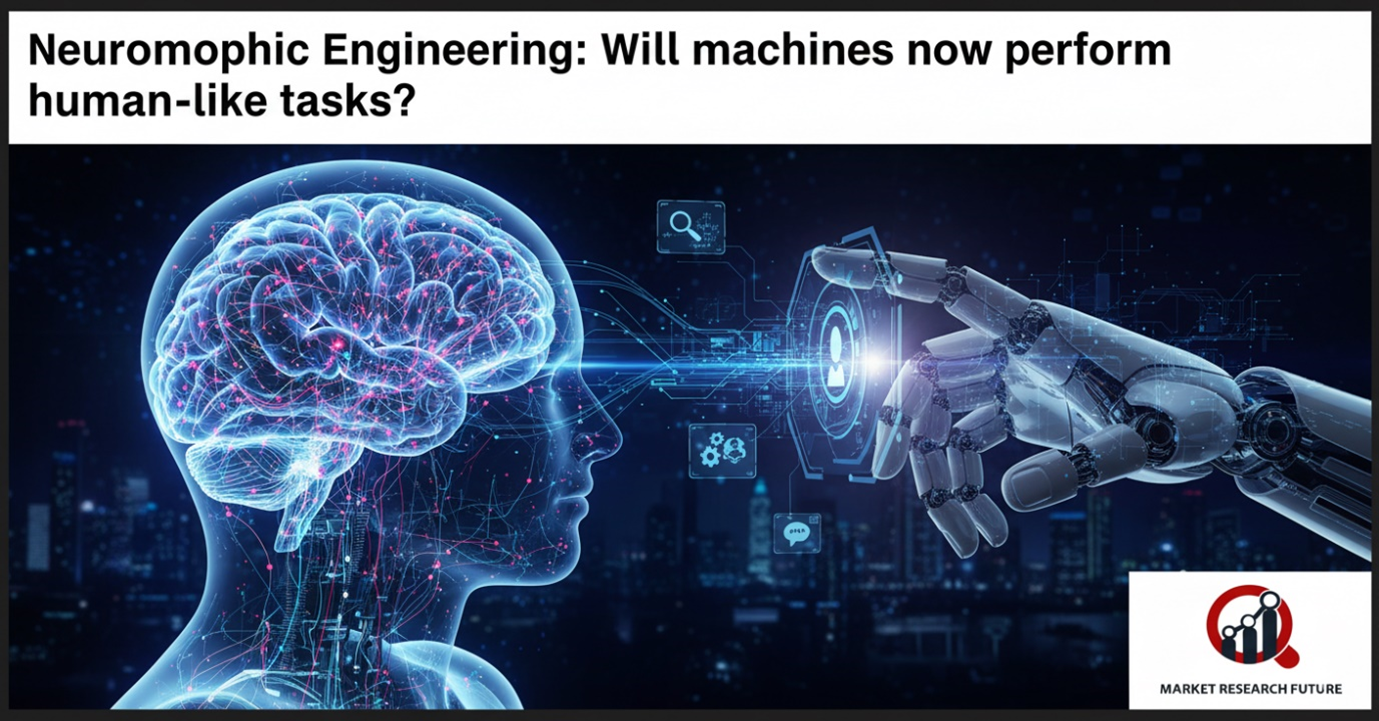
A Look at the Neuromorphic Computing Market
Think about a world where machines can do more than just calculate. They can also learn, adapt, and think like the human brain. Neuromorphic computing is a revolutionary new way of designing computers that copies the structure and function of the human nervous system. This is no longer science fiction; it is now a reality.
Neuromorphic engineering uses neuroscience, computer science, and artificial intelligence to make hardware and software systems that can think like people do. There are two goals: to make smart machines that can think for themselves, learn, and make decisions, and to learn more about how the human brain works.
Neuromorphic computing goes beyond the limits of traditional computing models by making circuits that work like the brain's neural architecture. These brain-inspired systems want to make machines that can see, understand, and react to data in real time. This is a big step toward making technology that is truly smart.
Changing the Future of Intelligence
Neuromorphic computing is the most important part of the next AI revolution. Neuromorphic systems work more like the human brain than regular computers do. They use parallel, adaptive, and energy-efficient processes instead of linear ones. This makes them perfect for doing hard things like recognizing speech and images, navigating on their own, understanding natural language, and making decisions.
The uses are many and always changing, from smart assistants and robots to medical diagnostics and cybersecurity. Neuromorphic chips could soon give robots the ability to do complex tasks that are similar to those of humans, such as recognizing emotions, predicting actions, and adapting to new situations. Neuromorphic systems are expected to change how machines interact with the world around them in fields like aerospace, defense, and entertainment.
These systems don't just read data; they also understand it and remember it. Neurocomputers can spot patterns, learn from their mistakes, and even guess what will happen next. These are all steps toward real cognitive intelligence in AI.
What Makes the Market Grow
Neuromorphic engineering is becoming more popular because of the growing interest in artificial intelligence and machine learning. As more businesses use automation and smart technologies, they need computing solutions that can quickly and easily handle huge amounts of data. Neuromorphic chips are changing the game because they can process data at lightning-fast speeds while using very little energy.
Also, the growth of autonomous systems, like self-driving cars and smart drones, is driving new ideas in neuromorphic research. These systems need adaptive intelligence that can take in information from the environment and make decisions right away. Neuromorphic computing is the best way to do this.
The change from traditional Von Neumann architecture to neuromorphic design is also changing how data is stored and processed. These chips combine memory and processing instead of separating them, which makes calculations faster and more efficient, just like neurons in the human brain.
Problems and chances
Neuromorphic computing has a lot of potential, but it also has some problems. To make brain-like architectures, you need complex algorithms and special hardware that are still being developed. It is still hard to get neural-inspired hardware to work with existing software systems, which slows down its widespread use.
Also, people outside of research labs and certain industries still don't know much about neuromorphic technology. But major tech companies keep putting a lot of money into this area, which speeds up progress. New developments in edge computing, cloud integration, and AI-driven chip design are closing these gaps and making it possible for large-scale applications.
Edge AI is one of the most promising new areas for neuromorphic systems. It lets smartphones, cameras, and wearables think for themselves without having to be connected to the cloud all the time. This not only makes things faster and more private, but it also uses a lot less power.
In conclusion
As traditional silicon-based computing gets closer to its limits, neuromorphic engineering looks like the next big step forward. IBM and Intel, two of the world's biggest companies, are putting money into brain-inspired architectures that could change how smart and efficient computers are.
Neuromorphic machines are more than just the next step in AI; they are the beginning of cognitive computing, where technology learns, understands, and adapts like we do. There are endless possibilities, from self-driving cars to smart homes to better healthcare systems.
The time of machines that act like people has begun. Neuromorphic computing is at the forefront of this change, and the line between human and artificial intelligence is getting harder to see.